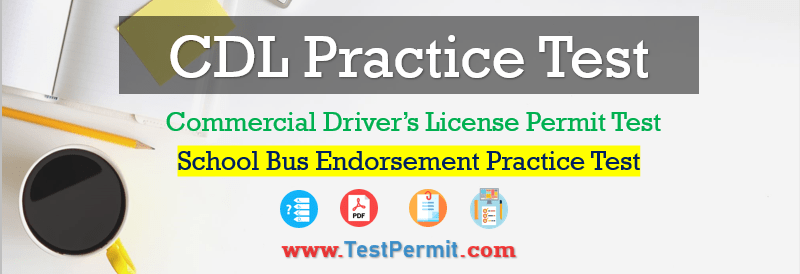CDL School Bus Endorsement Practice Test 2024: Commercial Driver’s License Permit Test (CDL) in the USA: Try our free School Bus Endorsement question answers with explanation, you can also download a printable PDF for free.
You should be thoroughly familiar with your state and local school district laws and regulations. A CLP holder with a passenger (P) and/or a school bus (S) endorsement is prohibited from operating a CMV with passengers, other than federal/ state auditors and inspectors, test examiners, other trainees, and the accompanying CDL holder (CFR, Title 49 §383.25).
CDL School Bus Endorsement Practice Test
What Does the Test Cover?
- Danger Zones and Use of Mirrors
- Loading and Unloading
- Emergency Exit and Evacuation
- Railroad-highway Grade Crossing
- Student Management
- Antilock Braking Systems
- Special Safety Situations
School Bus Drivers must have a commercial driver’s license if they drive a vehicle designed to transport 16 or more persons, including the driver. They must have a school bus endorsement in addition to a passenger endorsement, therefore the endorsement on their license will be a PS endorsement.
| Test Name | CDL Practice Test 2024 |
| Language | English |
| License | Endorsements Permit |
| Total Questions | 50 Knowledge Practice Test |
| Test For | Commercial Driver License |
| Test Preparation | School Bus Endorsement |
| Country | USA |
| Explanation | Yes |
- CDL General Knоwlеdgе Practice Test 1
- CDL General Knоwlеdgе Practice Test 2
- CDL General Knоwlеdgе Practice Test 3
- CDL General Knоwlеdgе Practice Test 4
- CDL General Knоwlеdgе Practice Test 5
- CDL General Knоwlеdgе Practice Test 6
